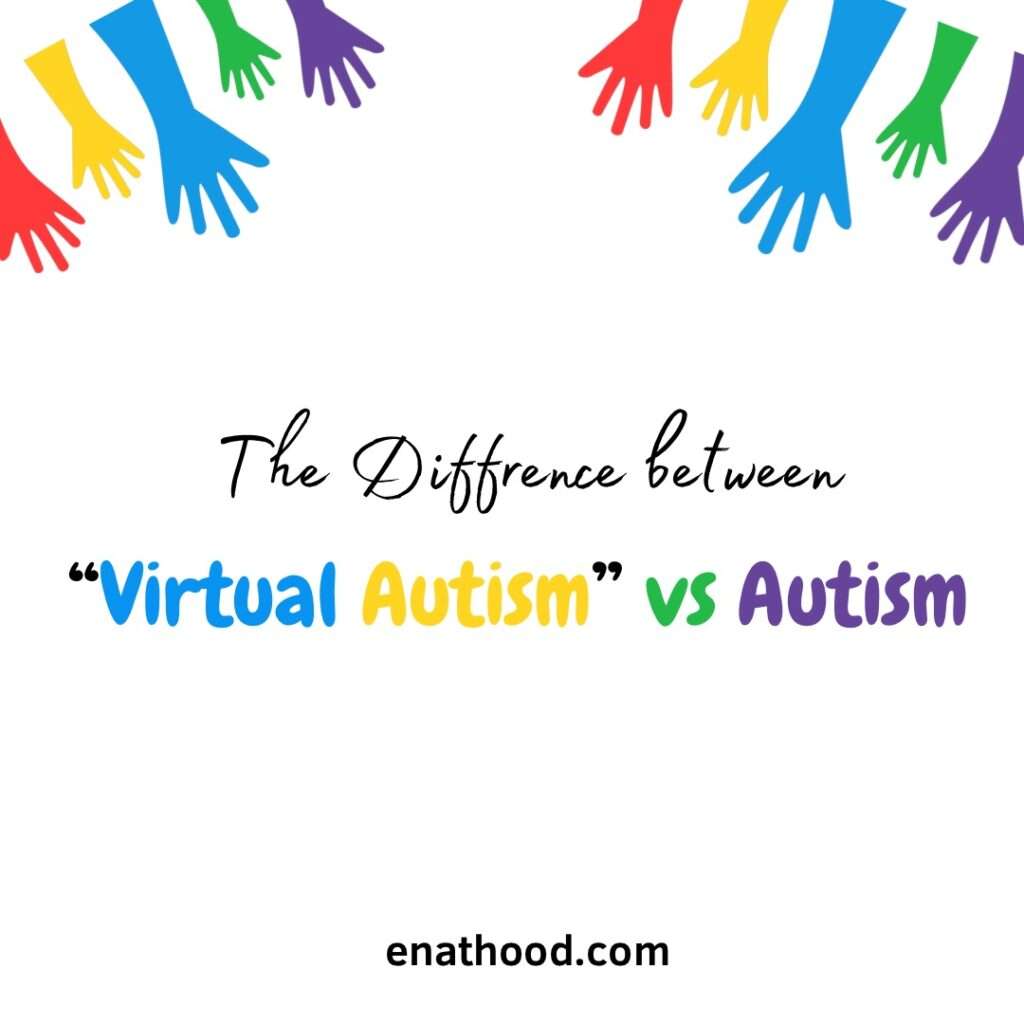
As a mother, I’ve noticed a concerning trend in our community. The term “Virtual Autism” has become a buzzword, but it’s causing more confusion than clarity, especially for parents.
Too often, children exhibiting symptoms of autism or speech delay are being mislabeled as having “virtual autism” due to excessive screen time.
It’s time to set the record straight and empower parents with the correct information. Let’s define virtual Autism:
What is “Virtual Autism”?
It’s not a clinical diagnosis; rather, it stems from excessive screen time, particularly in children under three years old.
Dr. Marius Zamfir, a clinical psychologist from Romania, used the phrase “Virtual Autism” for the first time.
Babies and toddlers who spend too much time in front of a mobile, computer, television, or tablet screen can exhibit behaviors resembling autism or speech delay.
However, it’s crucial to understand that this isn’t Autism. It’s more accurately described as screen addiction or the consequences of screen overuse on early childhood development.
The distinction between Autism and virtual Autism is vital.
Autism is a complex bio-neurodevelopmental disorder with specific diagnostic criteria.
But “virtual autism” is a term coined to describe the effects of screen addiction on young children’s development.
The symptoms may overlap, but the underlying causes are different.
As parents, we must advocate for our children’s well-being, whether they have special needs or not.
It’s essential to trust our instincts and seek professional guidance if we have concerns about our child’s development.
Early intervention is key, but addressing the issue’s root cause is equally important, especially regarding screen time.
Excessive screen time can harm young children’s development, including speech and social skills delays.
As parents, we must be mindful of our children’s screen usage. We need prioritize activities that promote healthy development, such as outdoor play, reading, and interactive playtime.
It’s time to shift the focus from labeling children with “virtual autism” to addressing the real issue at hand. Screen Addiction and its impact on early childhood development.
By promoting healthy screen habits and providing alternative activities for our children, we can help them thrive and reach their full potential.
Let’s empower parents to recognize the signs of screen addiction. We can take proactive steps to limit screen time, and foster a nurturing environment for their children’s growth and development.
Together, we can ensure every child can flourish in a screen-free, supportive environment.
More about Autism
As mentioned above, Autism is not simply a behavioral issue or a phase a child will outgrow. According to CDC, Autism spectrum disorder (ASD) is a developmental disability that can cause significant social, communication and behavioral challenges.
Also, Autism is a bio-neurological disorder that impacts the way individuals interact with the world around them.
From challenges in social communication and sensory sensitivities to repetitive behaviors and intense interests, Autism manifests differently in each person.
It’s a spectrum disorder that varies in severity and presentation, but its core characteristics remain consistent.
Recognizing the symptoms of Autism is crucial for early intervention and support.
Look for signs such as delayed speech or language development, difficulty maintaining eye contact, sensory sensitivities, repetitive movements or behaviors, and struggles with social interaction.
If you notice these red flags in your child, don’t hesitate to seek professional evaluation and guidance from healthcare providers or specialists in Autism.
Navigating life with an autistic child can feel overwhelming at times, but remember, you are not alone. Here are some ways parents can support their child and themselves along the journey:
1. Educate Yourself: Take the time to learn about Autism, its characteristics, and available resources. Knowledge empowers and can help you better understand your child’s unique needs.
2. Build a Support Network: Surround yourself with understanding friends, family members, and professionals who can offer support and guidance.
Connect with other parents of autistic children through support groups or online communities to share experiences and insights.
3. Advocate for Your Child: Be your child’s biggest advocate, whether navigating the educational system, accessing therapy services, or ensuring accommodations are in place. Trust your instincts and speak up for what your child needs to thrive.
4. Embrace Neurodiversity: Celebrate your child’s strengths, interests, and unique perspective on the world. Embrace neurodiversity and foster an environment of acceptance and inclusion at home and in the community.
5. Practice Self-Care: Remember to prioritize self-care and seek support. Raising a child with Autism can be emotionally and physically demanding, so be sure to take time for yourself to recharge and rejuvenate.
Above all, approach parenting with love, patience, and empathy. Your child is not defined by their diagnosis, but by the incredible individual, they are destined to become.
Embrace the journey, celebrate the milestones, and cherish the moments of joy, for they are the true essence of parenting a child with Autism.
The Problems of Screen Time
The excessive use of screens among children, particularly those under the age of two, can lead to various developmental issues, including delayed language acquisition, impaired social skills, and disrupted sleep patterns.
To combat this, parents can engage in alternative activities. Such as reading books, playing with toys that encourage physical activity and imagination, or exploring nature outdoors.
For children above two, it’s important to limit screen time to no more than one hour per day of high-quality programming and ensure that screen time is balanced with plenty of opportunities for physical activity, social interaction, and creative play.
Additionally, parents can establish screen-free zones in the home, such as bedrooms and mealtimes, to encourage healthier habits and foster stronger family connections.
As a mother of three, I initially found myself navigating the challenges of balancing screen time with other activities for my children. However, upon recognizing the negative impacts of excessive screen use on their development, I decided to detox them from screens and encourage more free play.
Initially daunting, the transition proved transformative for my children and myself. What seemed impossible initially became more manageable as we established new routines and discovered the joys of screen-free activities.
Witnessing my children engage in imaginative play, explore their creativity, and develop stronger bonds with each other filled me with immense joy and reassurance. I found that as we embraced this lifestyle change, not only did my children thrive, but I also experienced a deeper connection with them.
My journey is a testament to other parents that while transitioning to a screen-free lifestyle may seem daunting, the benefits far outweigh the initial challenges. Encouraging parents to take the leap and embark on this journey with their children can lead to a happier, healthier, and more fulfilling family life.
Resources for Autism

 Preparing for School: Tips for Your Child Smooth Transition
Preparing for School: Tips for Your Child Smooth Transition
Leave a Reply